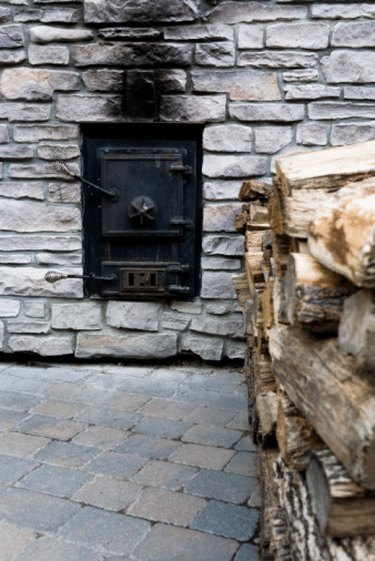
No matter what method you use to heat your home, you need to take precautions to ensure that it is kept safe. This means regular maintenance, keeping hot areas free of clutter and supplying adequate ventilation. Coal burning stoves present more difficulties than many other forms of heat because of the dirtiness and potential toxicity of their fuel.
Chimney Fires
Video of the Day
The main difference between a coal stove and a wood stove is that a coal stove tends to burn much hotter. A person who is accustomed to a wood stove may be unaware of this and not take proper precautions to keep the coal under control. Allowing a coal stove to burn too hot can lead to a chimney fire, particularly if there is creosote buildup in your chimney. Although the majority of chimney fires simply burn up the creosote and then go out, there is a risk that a chimney fire will ignite rafters or other parts of your house. Also, if a chimney fire gets too hot, it can damage your chimney by causing the lining or the bricks to crack or shift.
Video of the Day
Fumes
The reason wood stoves and coal stoves are vented through chimneys is because burning wood or coal creates smoke. In an efficient, airtight stove, this smoke is minimal, but it still isn't something that you want in the house. A coal stove that isn't properly vented can be subject to backdrafts that can fill the house with toxic coal fumes. This can happen when the chimney isn't tall enough, when there are cracks in the stove or the stovepipe or when there is a dramatic shift in barometric pressure, causing air pressure to be heavier outside yourself than inside, a condition that may force smoke and fumes down the chimney and into your house.
Hot Ashes
Ashes and cinders should be handled with care, and never left in contact with anything flammable. Emptying ashes from a coal stove and leaving them inside can lead to disaster. Even when ashes look like they are completely out, they may be hiding coals that can still ignite things. When emptying ashes from a coal stove, put them into a metal can or hopper, take them directly outside and dump the ashes into a metal container. Keep the ash container a distance from the house.
Burns
The surface of a coal stove can reach very high temperatures. This can be a hazard for infants or young children who are old enough to move around but not old enough to understand that the stove is unsafe. Young children must never be left unattended in a room with a running coal stove. A stove can also present a burn risk to people who may be unsteady on their feet and prone to falling.